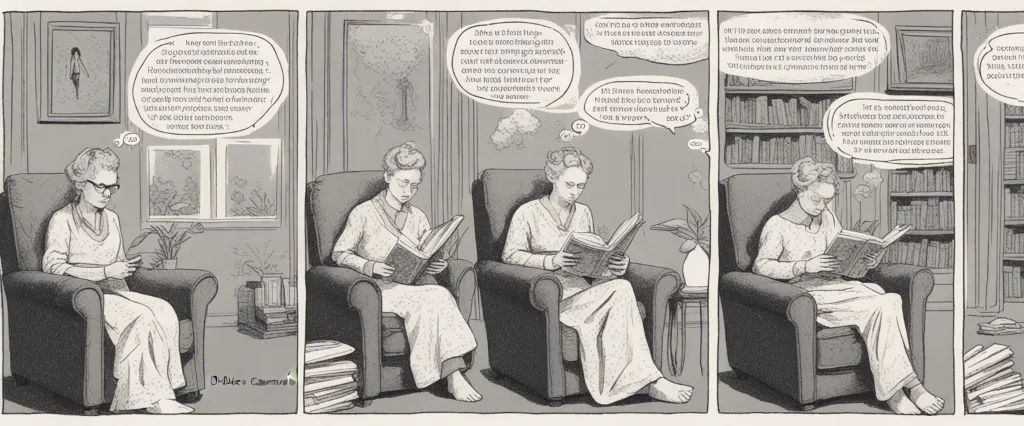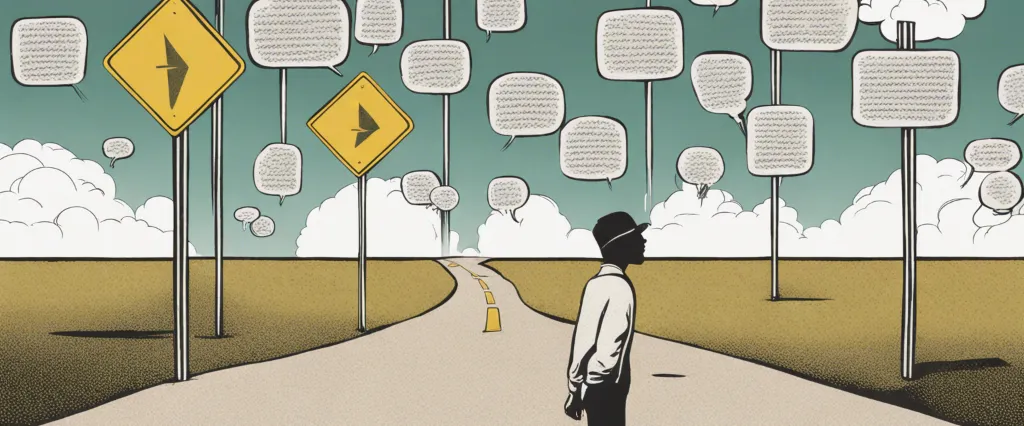In “Start Where You Are” renowned Buddhist teacher Pema Chödrön invites readers to embark upon a transformative journey towards inner peace and spiritual growth. Drawing from centuries-old Tibetan Buddhist wisdom, Chödrön presents practical tools and compassionate guidance to help individuals navigate life’s challenges and unleash their true potential. As a long-time student and teacher of Buddhism, Pema Chödrön has dedicated her life to sharing timeless teachings in a relatable and accessible manner, inspiring countless individuals around the world to find solace, courage, and profound joy.
Chapter 1: Embracing the Present Moment
The chapter emphasizes the idea that no matter what challenges we face in life, we can always start fresh in the present moment.
Chödrön begins by discussing the common tendency of constantly seeking happiness and avoiding pain, which she refers to as the “hedonic treadmill.” She explains that this approach keeps us from fully experiencing the richness of life and attaining genuine happiness. Instead, she encourages readers to cultivate an attitude of curiosity and compassion towards their own experiences, both positive and negative.
The chapter also introduces the concept of “shenpa,” which Chödrön defines as the experience of being hooked or stuck. She explains that shenpa arises when we react strongly and automatically to certain triggers, leading to patterns of negativity and suffering. By being aware of shenpa and practicing mindfulness, we can interrupt these patterns and create space for a more skillful response.
Chödrön guides readers through a simple mindfulness practice called “staying.” This practice involves fully being present with whatever arises in the mind and body, without judgment or resistance. She suggests that by embracing the present moment, we can cultivate a sense of wakefulness and openness that allows us to navigate life’s challenges with greater ease and clarity.
Overall, Chapter 1 serves as an invitation to start where you are and embark on a journey of self-discovery and mindfulness.
Chapter 2: Cultivating Mindfulness and Awareness
The chapter begins by emphasizing the importance of fully embracing and experiencing the present moment instead of constantly seeking distractions or escaping uncomfortable situations. Chödrön suggests that by cultivating mindfulness, we can learn to be fully present with both the joy and pain that life brings. Mindfulness teaches us to acknowledge our thoughts and emotions without judgment, giving us the opportunity to respond skillfully rather than react impulsively.
Chödrön introduces the concept of the “gap” as a space between our habitual reactions and a more conscious response. By noticing this gap, we can pause and create a sense of spaciousness in which we can examine our thoughts and emotions with a compassionate and non-judgmental attitude. Through this practice, we become more aware of our patterns and triggers, allowing us to choose our actions more intentionally.
The chapter also explores the significance of recognizing and embracing impermanence – the understanding that everything in life, including our thoughts and emotions, is constantly changing. By accepting impermanence, we can cultivate a deeper appreciation for the present moment and let go of our attachments and aversions.
Chödrön suggests different mindfulness techniques, such as sitting meditation, walking meditation, and mindful eating, to develop a more profound sense of connection with ourselves and the world around us. These practices offer opportunities to observe our thoughts and emotions without getting caught up in them, allowing us to cultivate a sense of inner peace and freedom.
Chapter 3: Finding Compassion for Yourself and Others
Chödrön begins by emphasizing the significance of self-compassion, highlighting how it is essential to acknowledge and accept our own flaws and shortcomings without judgment or blame. She encourages readers to embrace self-compassion as a way to develop kindness and understanding towards themselves, leading to a healthier relationship with oneself and consequently with others.
The chapter also explores the concept of interconnectedness and the practice of compassion towards others. Chödrön emphasizes that we should recognize that we are not alone in our struggles and that all beings share the same desire for happiness and freedom from suffering. By cultivating compassion towards others, we develop a sense of connection and understanding, allowing us to respond to their pain and difficulties with empathy and support.
Chödrön offers practical techniques to strengthen our compassion practice. She suggests using meditation and mindfulness to cultivate self-compassion and develop empathy towards others. The practice of Tonglen, where we breathe in the suffering of others and breathe out compassion, is also introduced as a powerful tool for cultivating compassion.
In conclusion, Chödrön emphasizes that through these practices, we can develop a deep sense of connection and empathy, fostering personal growth and contributing to a more compassionate and understanding world.
Chapter 4: Letting Go of Attachments and Expectations

Chödrön emphasizes that life is constantly changing, and clinging onto specific outcomes only causes us more frustration. She encourages the practice of letting go and surrendering control over events, allowing things to unfold naturally. By accepting and embracing impermanence, we can find freedom from our attachments.
The chapter explores various ways to cultivate the mindset of letting go. Chödrön suggests starting with small attachments and expectations, such as wanting others to behave a certain way or wanting things to go according to plan. By noticing these desires and consciously releasing them, we can develop greater equanimity and peace of mind.
The author also touches upon the concept of selflessness. She explains that our attachments often stem from a self-centered perspective, constantly seeking validation and security. However, when we let go of our emphasis on the self, we open ourselves up to deeper connections and experience a greater sense of interdependence with others and the world around us.
Chödrön concludes the chapter by reminding readers that letting go doesn’t mean giving up or becoming detached. It is about recognizing the temporary nature of everything and living with an attitude of flexibility and acceptance. Letting go allows us to be present in the moment, fully engaged with life, and ready to embrace whatever comes our way.
Chapter 5: Navigating Difficult Emotions and Challenges
Chödrön suggests that rather than avoiding or suppressing difficult emotions, it is important to embrace them and utilize them as a catalyst for growth and self-awareness.
The chapter emphasizes the importance of acknowledging and accepting the reality of difficult emotions without judgment. Chödrön encourages readers to approach emotions such as fear, anger, and sadness with an attitude of curiosity and compassion. By acknowledging these emotions, we learn to sit with the discomfort and allow it to teach us valuable lessons about ourselves and our patterns of behavior.
Chödrön also explores the concept of “shenpa,” which refers to the feeling of being hooked or triggered by challenging emotions or situations. She teaches techniques such as mindful breathing and labeling emotions to help us become aware of when we are being “hooked” and how to disengage from these patterns.
Additionally, the chapter delves into the practice of Tonglen, a compassionate meditation technique. Tonglen involves taking in the suffering of others on the in-breath and sending out relief and joy on the out-breath. By practicing Tonglen, we develop empathy and learn to transform our difficult emotions by directing them towards the well-being of others.
Chapter 6: Cultivating Inner Strength and Resilience
Chödrön begins by explaining that the key to cultivating inner strength lies in acknowledging and accepting our pain and suffering. She emphasizes the importance of not trying to escape or avoid these difficult emotions, but rather to face them head-on with kindness and compassion towards ourselves. By doing so, we can build resilience and inner strength.
The author introduces the concept of tonglen meditation as a powerful tool for cultivating strength and resilience. In tonglen practice, we learn to breathe in the suffering of ourselves and others, and breathe out love, compassion, and healing. This practice allows us to transform our own pain and use it to develop empathy and compassion towards others.
Chödrön further explains that another aspect of cultivating inner strength is learning to pause and remain present in the face of turmoil. We are encouraged to observe the arising thoughts and emotions without judgment or over-identification. This practice helps us to avoid getting swept away by our emotions and gives us space to respond thoughtfully and wisely.
By actively working on these aspects, we can become more emotionally resilient and navigate life’s challenges with grace and strength.
Chapter 7: Embracing Impermanence and Change
She explains that grasping onto things or circumstances as fixed and unchanging only leads to suffering and dissatisfaction.
Chödrön encourages readers to develop a compassionate and accepting attitude towards the inevitability of change. She suggests that we should view change as an opportunity for growth, transformation, and self-discovery. Instead of resisting or fearing change, she advises readers to remain open and adaptable, recognizing that change can lead to new beginnings and greater freedom.
The chapter highlights the importance of developing mindfulness and presence in order to embrace impermanence. Chödrön emphasizes the need to be fully present in each moment and to cultivate a sense of gratitude for the experiences and relationships we have, as they may not last forever. By acknowledging the transient nature of life, we can appreciate the beauty and preciousness of each moment.
Chödrön encourages readers to let go of attachment and the need for certainty, recognizing that clinging onto the illusion of stability only brings suffering. Instead, she advises cultivating an attitude of curiosity, playfulness, and flexibility. By accepting impermanence and change, we can navigate life’s ups and downs with greater ease and grace.

Chapter 8: Living a Life of Purpose and Authenticity
The chapter delves into the notion that in order to live a life of authenticity, one must first cultivate self-acceptance and self-love. Chödrön emphasizes the importance of embracing one’s strengths and weaknesses, acknowledging personal flaws, and treating oneself with kindness and compassion. By accepting ourselves as we are, with all our imperfections, we can better understand our purpose and live authentically.
Furthermore, Chödrön discusses the significance of compassion towards others. She explains that true authenticity involves being mindful of how our actions affect others and developing empathy towards their experiences. By cultivating compassion, we can build genuine connections and contribute positively to the world around us.
The chapter also explores the idea of living in alignment with one’s values and beliefs. Chödrön encourages readers to reflect on their core principles and make conscious choices that align with these values. This leads to a sense of purpose and a life lived with authenticity.
Chödrön concludes the chapter by emphasizing the importance of continually exploring and rediscovering oneself. She encourages readers to embrace change, take risks, and be open to self-transformation. By continuously learning and growing, one can live a life of purpose and authenticity.
Chödrön emphasizes the significance of embracing oneself, being compassionate towards others, and continuously exploring and evolving to live a meaningful life.
After Reading
In conclusion, Pema Chödrön’s book “Start Where You Are” is a brilliant guide that invites readers to embrace their flaws, uncertainties, and insecurities as opportunities for growth and self-discovery. Emphasizing the importance of mindfulness and self-compassion, Chödrön teaches us how to navigate through life’s challenges and cultivate a deep sense of inner peace. By encouraging us to let go of our preconceived notions and fear of failure, she empowers us to fully embrace the present moment and embark on a transformative journey towards self-acceptance and personal fulfillment. With practical exercises and heartfelt anecdotes, Chödrön provides a roadmap to discovering our true selves, embracing imperfections, and finding joy in the midst of chaos. “Start Where You Are” is a must-read for anyone seeking a gentle yet powerful guide to living a more authentic and fulfilling life.
1. Atomic Habits: An Easy & Proven Way to Build Good Habits & Break Bad Ones” by James Clear – This book provides practical strategies to help readers develop and maintain positive habits. It explores the science behind habit formation and offers actionable techniques to overcome obstacles and create lasting change. If you enjoyed “Start Where You Are” and want to further enhance your personal growth journey, “Atomic Habits” is a must-read.
2. Mindset: The New Psychology of Success” by Carol S. Dweck – Building on the themes of self-improvement and personal development, “Mindset” explores the concept of fixed versus growth mindsets. Dweck’s research reveals how our beliefs about intelligence and talent can significantly impact our achievements. This book provides valuable insights on how to cultivate a growth mindset and unleash our full potential.
3. The Power of Now: A Guide to Spiritual Enlightenment” by Eckhart Tolle – As you embark on your self-discovery journey, “The Power of Now” offers profound wisdom and practical guidance for finding inner peace and mindfulness. Tolle’s teachings help readers let go of past regrets and future anxieties, allowing them to fully embrace the present moment and experience profound transformation.
4. Thinking, Fast and Slow” by Daniel Kahneman – “Predictably Irrational” delved into decision-making biases, and “Thinking, Fast and Slow” continues along this path. Nobel laureate Daniel Kahneman explores the two systems of thinking that influence our choices and judgments, shedding light on the cognitive errors we unknowingly make. Understanding these cognitive biases empowers readers to make better decisions, both in their personal and professional lives.
5. Man’s Search for Meaning” by Viktor E. Frankl – This stunning memoir and psychological exploration by Holocaust survivor Viktor Frankl offers profound insights into the human condition and the search for meaning in life. By sharing his experiences in concentration camps and his subsequent development of logotherapy, Frankl highlights the importance of finding purpose and inner strength, even amidst unimaginable suffering. This timeless classic provides a powerful reminder of the resilience and potential within each of us.




